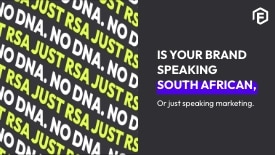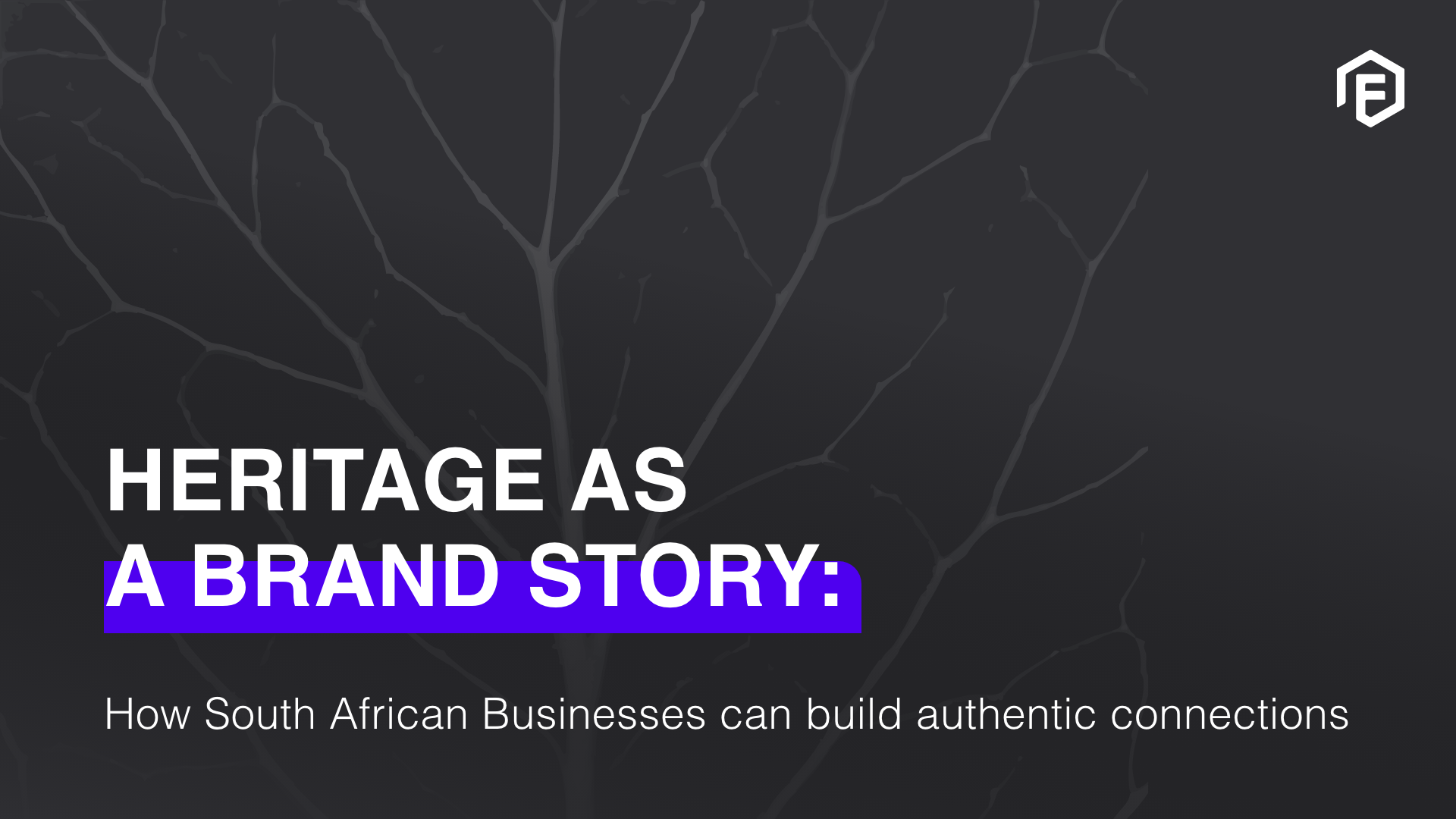IS YOUR BRAND SPEAKING SOUTH AFRICAN, OR JUST SPEAKING MARKETING?
You can instantly spot a brand that’s trying too hard to sound local. It’s in the forced slang and awkward “Mzansi moments” with copy that drops a “howzit” like it’s seasoning rather than substance.
It’s the marketing equivalent of someone at a braai who’s clearly not from around here but insists they love biltong. While the effort might earn a polite smile, it doesn’t quite earn connection.
The truth is that South Africans can tell when you’re speaking atthem instead of with them.
For It to Sound Local, It Needs to Feel Local
Being “South African” in your marketing doesn’t mean sprinkling in isiZulu phrases or showing a skyline of Table Mountain. You need to understand why people care, what they value, and how they see themselves in the stories you tell.
Brands that truly “speak South African” don’t just translate, they interpret. They pay attention to tone, timing, and truth. They understand that authenticity isn’t about aesthetics but attunement.
The best way to connect with South Africans is to mirror us, not mimic. Show up as a brand that reflects back their humour, resilience, and warmth, not just their hashtags.
From Localisation to Living Language
Global brands entering South Africa often approach localisation as a checklist: They change a few words here, swap the stock photos there, and adjust for currency. However, localisation here is emotional, not logistical.
South African marketing thrives on nuance, like the layered identity of 12 official languages, a patchwork of cultures, and a nation that knows how to laugh through chaos. The best campaigns don’t speak English, isiXhosa, or Afrikaans; they speak human.
That’s why campaigns like “Local Is Lekker” still resonate years later. They tap into something deeper: the sense that we see each other. That pride isn’t always loud. Sometimes it’s quiet, consistent, and lived.
Don’t Treat Culture as a Campaign. It’s a Commitment
Marketing that feels authentic is never seasonal. You can’t switch it on for Heritage Month and call it a day.
Real connection requires cultural curiosity all year round. It means involving South Africans in your creative process instead of just featuring them in your visuals, and understanding why a meme lands in Khayelitsha but flops in Kloof.
When your audience sees that you’ve listened, not just labelled, your brand moves from relevance to resonance
Conclusion: Show, Don’t Sell
So before your next campaign goes live, ask yourself:
- Does it actually speak South African, or is it just trying to sound that way?
- Are we using culture as context, or as content?
- Would a South African audience recognise themselves in this story or just their stereotypes?
The brands that thrive here are those that listen before they speak. They’re the ones who know that “South African brand marketing” is a conversation.
To speak South African is to speak with respect, humour, and heart. It’s to swap translation for understanding, and show up consistently, not just when it’s convenient.
The best brands don’t try to sound local. They simply belong.
P.S. Don’t forget to share this article.
Flume is an independent, full-service digital marketing agency providing services that include SEO, web design and development, public relations, media buying, client service, UX/UI, and creative production. For more information visit www.flume.co.za or email us at h[email protected] to say, well, “hello”.



